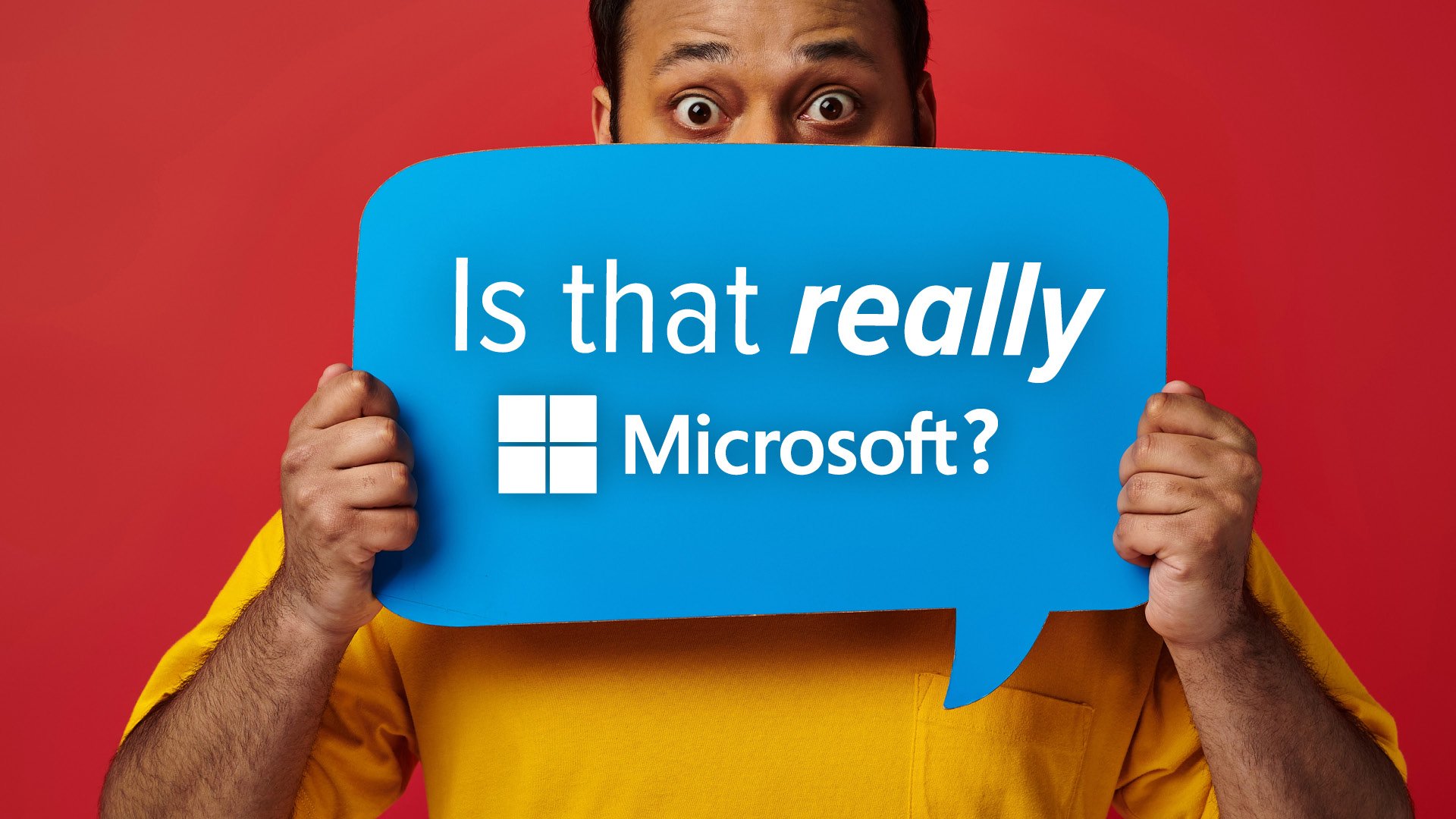3 min read
Is That Email Actually Microsoft? How to Spot a Phishing Scam
Ian Robertson
:
Aug 5, 2025

When an email arrives from Microsoft, it’s easy to assume it’s safe. After all, Microsoft is one of the biggest and most trusted technology companies globally. But what happens when that email is actually a carefully disguised phishing scam?
Cyber criminals frequently use trusted brand names like Microsoft to trick unsuspecting people. Currently, Microsoft is the most impersonated company globally when it comes to phishing scams. In fact, recent studies from early 2025 show that Microsoft impersonations account for approximately 36% of brand-related phishing attacks. Google and Apple follow closely behind, and together, these three companies represent more than half of all phishing scams. Understanding this trend is crucial to protecting your business from cyber threats.
Understanding #CyberSecurity: What is a Phishing Scam?
Phishing scams are deceptive messages—usually emails—that appear to come from trusted sources. Criminals create these fake communications to trick recipients into clicking harmful links, opening malicious attachments, or providing sensitive information like passwords, credit card details, or personal identification. Once criminals obtain this information, they can steal money, compromise business systems, or leak confidential data.
Why Microsoft Phishing Emails are Effective
The success of Microsoft phishing attacks relies on the credibility of the Microsoft brand. Criminals know people trust Microsoft, making it easier to deceive recipients. They carefully replicate official emails by using authentic logos, convincing language, and spoofed email addresses that closely resemble the genuine ones. This makes it challenging for even cautious recipients to spot fraud at first glance.
For instance, scammers might slightly alter email domains—such as using “micros0ft.com” instead of “microsoft.com”—relying on users to overlook these subtle differences.
How Phishing Attacks are Evolving
Phishing attacks are becoming increasingly sophisticated. Unlike older phishing attempts, today’s scams feature professional-looking content without obvious spelling mistakes or suspicious formatting. Cyber criminals invest considerable effort in creating fake websites identical to legitimate ones, making scams harder to identify.
Recent research highlights a significant increase in phishing attacks impersonating financial institutions, such as Mastercard. Victims enter sensitive card details on convincingly replicated websites, unknowingly handing their information directly to cyber criminals.
Recognizing a Microsoft Phishing Scam
Protecting your business from Microsoft phishing scams requires awareness and careful examination of emails. Here are some key indicators that can help you spot a phishing attempt:
-
Urgency or Threats: Genuine Microsoft emails never create unnecessary urgency or threaten immediate account suspension or other drastic actions.
-
Sender’s Address: Always inspect email addresses closely. Minor deviations from the official Microsoft email domain are common indicators of phishing attempts.
-
Unexpected Attachments or Links: Be cautious about emails that contain unexpected attachments or links, even if the sender appears trustworthy.
-
Request for Personal Information: Legitimate companies, including Microsoft, will never ask you to provide sensitive information directly through email.
If you’re unsure, always manually type the official Microsoft URL into your browser instead of clicking links provided in suspicious emails.
Steps to Keep Your Business Safe from Microsoft Phishing
To enhance your business’s #CyberSecurity and reduce the risk posed by phishing scams, consider adopting the following best practices:
-
Regular Employee Training: Educate employees about the latest phishing techniques and how to recognize fraudulent emails.
-
Use Multi-Factor Authentication (MFA): Implement MFA, requiring multiple verification methods to access accounts, significantly reducing the risk if passwords are compromised.
-
Invest in Advanced CyberSecurity Tools: Deploy security software capable of detecting and blocking phishing attempts before they reach your inbox.
-
Regular Updates and Patches: Ensure all software and security systems are regularly updated, as updates often address vulnerabilities exploited by cyber criminals.
What to Do If You’ve Been Targeted by a Phishing Scam
If you suspect you’ve received a phishing email impersonating Microsoft, take immediate steps to protect yourself and your business:
-
Do not click any links or attachments in the suspicious email.
-
Report the email to your IT department or CyberSecurity provider.
-
Delete the email after reporting it to prevent accidental interactions.
-
Change passwords immediately if you’ve accidentally provided any personal or sensitive information.
Staying Ahead with Robertson Technology Group
Navigating the complex landscape of cybersecurity threats requires vigilance and professional expertise. At Robertson Technology Group, we specialize in managed technology security and support solutions tailored specifically for small to medium-sized businesses across Canada. Our proactive approach takes the burden of technology management off your shoulders, providing professional oversight of your systems without needing onsite staff.
We prioritize personalized customer service, ensuring we understand the unique needs of your business to offer exceptional support. Robertson Technology Group continuously explores advanced solutions, including AI-driven security analysis, to identify risks promptly and accurately. With customized packages and strategic partnerships, our goal is to keep your business secure, productive, and prepared for future challenges in cybersecurity.
Trust Robertson Technology Group to safeguard your business technology, so you can focus on running and growing your company confidently.